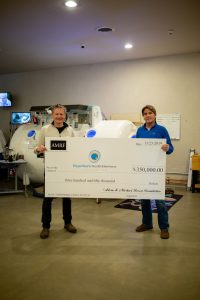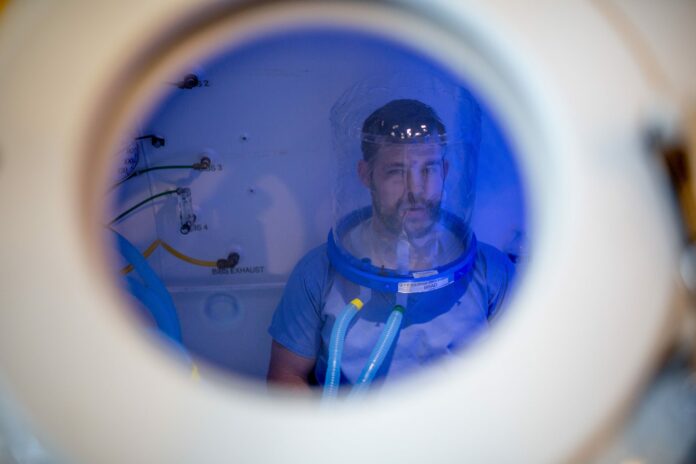At least 25 veterans per year now able to access hyperbaric treatment
By Eric Valentine

Justin Bieber believes in it. So does Tiger Woods. And Tim Tebow uses it, too.
It’s called hyperbaric oxygen therapy—a way to super-oxygenate your lungs, allowing your blood to carry three times the normal amount of oxygen through your body. It involves being placed in a pressurized chamber or tube or room, and it’s a well-established method for treating a slew of ailments and conditions, from burns and carbon monoxide poisoning to radiation and skin injury.
Thanks to two major donations from philanthropic organizations, more than two dozen veterans in the Valley and around Idaho suffering from issues like traumatic brain injury will be able to receive treatment at Hyperbarics of Sun Valley in Hailey.
“The VA is slowly adapting to the idea that this works for brain injuries, but right now there are many veterans who don’t meet all the conditions to get hyperbaric treatment covered,” explains Bas Verheijen, executive director of the Hyperbaric Health & Wellness Foundation (HHWF)—the nonprofit arm of Hyperbarics of Sun Valley.
The foundation was launched at the beginning of the year to try and raise funds that would cover veterans, especially those suffering from traumatic brain injury and issues with mood swings, anxiety, and sleep.
Raise funds it did. In the spring, the Arlene and Michael Rosen Foundation provided the HHWF with a $350,000 donation. And just this week, the J.A. and Kathryn Albertson Family Foundation partnered with the HHWF with a $50,000 donation earmarked to help cover hyperbaric treatment for veterans.
Verheijen said if treatments are shown to be successful, it could trigger an additional $50,000 from the Albertson Family Foundation in 2020 and an additional $150,000 per year for four years from the Rosen Foundation.
“We have momentum now,” Verheijen said.
One person feeling the benefit of that momentum is U.S. Army veteran Brian Jenkins, a combat medic who served three tours of duty and endured an IED (improvised explosive device) explosion as well as an accident involving a collision between a 500-pound door and his head. A slew of conditions followed for Jenkins, from depression and anxiety to nightmares and brain fog.
Jenkins just wrapped up the last of his 40 sessions around Thanksgiving. And he’s grateful.
“The difference is night and day. I’ve been telling all my battle buddies they have to try it,” Jenkins said. “I didn’t even know I had brain fog before. Now I can write out a to-do list and get it done in 10 minutes, when before I would have struggled with it for probably two to three days.”
Jenkins also said the nightmares have stopped.
So how come this dream treatment isn’t the method of choice by the VA?
“It’s still considered sort of off-label,” explains Phil Rainey, the certified hyperbaric technician and emergency medical technician who owns and operates the Hailey-based treatment center.
Although the medical community acknowledges oxygen therapy’s effectiveness along a whole range of conditions and illnesses, there are nearly two dozen it does not. Brain injury and depression are two of those. Coupled with the expense of the treatment, the VA considers it a therapy of last resort.
“Unfortunately, their decision doesn’t have much to do with how well it works,” Rainey said.
In the meantime, Rainey takes solace in the success of his fledgling foundation and the fact that roughly two dozen veterans from Idaho and other nearby states can now afford this cutting-edge therapy.



